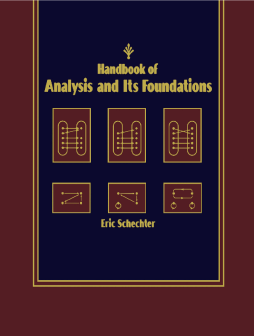
Additional Information
Book Details
Abstract
Handbook of Analysis and Its Foundations is a self-contained and unified handbook on mathematical analysis and its foundations. Intended as a self-study guide for advanced undergraduates and beginning graduatestudents in mathematics and a reference for more advanced mathematicians, this highly readable book provides broader coverage than competing texts in the area. Handbook of Analysis and Its Foundations provides an introduction to a wide range of topics, including: algebra; topology; normed spaces; integration theory; topological vector spaces; and differential equations. The author effectively demonstrates the relationships between these topics and includes a few chapters on set theory and logic to explain the lack of examples for classical pathological objects whose existence proofs are not constructive. More complete than any other book on the subject, students will find this to be an invaluable handbook.
- Covers some hard-to-find results including:
- Bessagas and Meyers converses of the Contraction Fixed Point Theorem
- Redefinition of subnets by Aarnes and Andenaes
- Ghermans characterization of topological convergences
- Neumanns nonlinear Closed Graph Theorem
- van Maarens geometry-free version of Sperners Lemma
- Includes a few advanced topics in functional analysis
- Features all areas of the foundations of analysis except geometry
- Combines material usually found in many different sources, making this unified treatment more convenient for the user
- Has its own webpage: http://math.vanderbilt.edu/
"This is quite a book! From the table of contents, it would appear to include just about everything one would want to know about the foundations of analysis. It is well-organized and the exposition in the sample chapters is quitegood˜clear, concise, and relatively easy to read. It is very good technically; the author knows what he is talking about."--George L. Cain, GEORGIA INSTITUTE OF TECHNOLOGY
"At the very outset, I would like to say that I am very much impressed by what I have seen. I have read the Preface and understood the authors purpose and his aims. I admire him for his courage in attempting such a daunting task, and I admire him even more for what appears to me to be a very successful completion of this task.....I am very excited over the prospect of this book being made available; it will be a very useful reference not only for beginning graduate students, but also for their teachers."--Robert G. Bartle, EASTERN MICHIGAN UNIVERSITY
